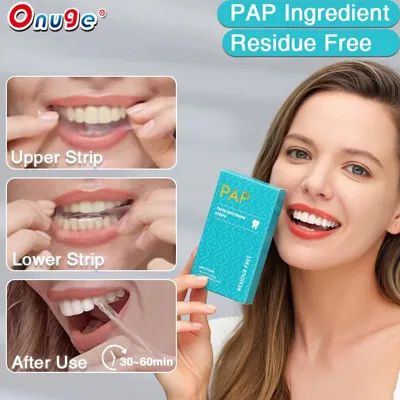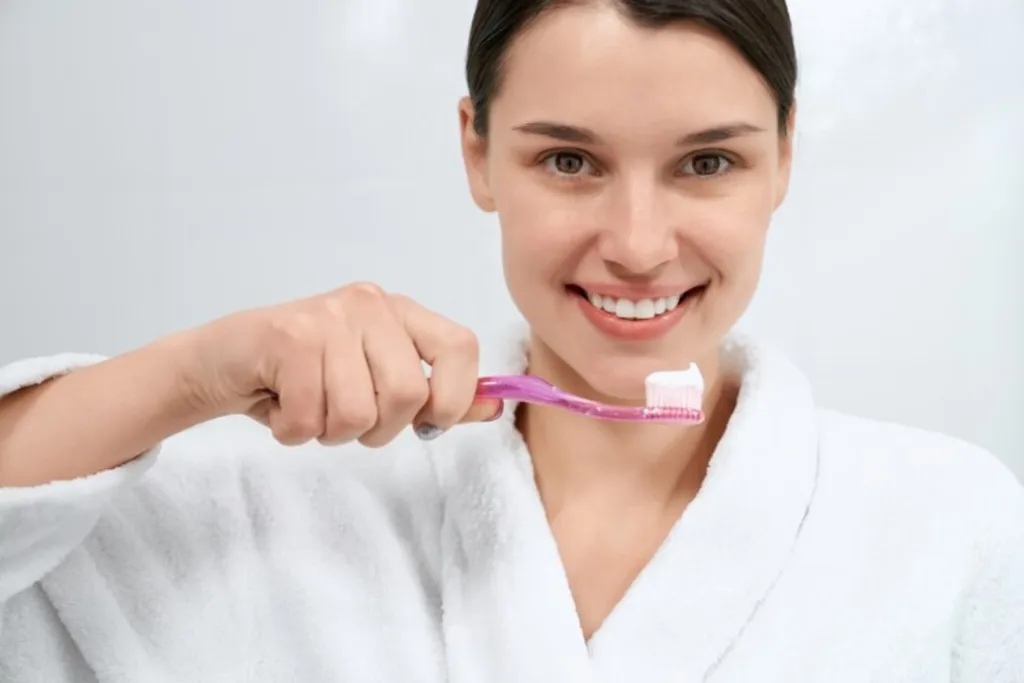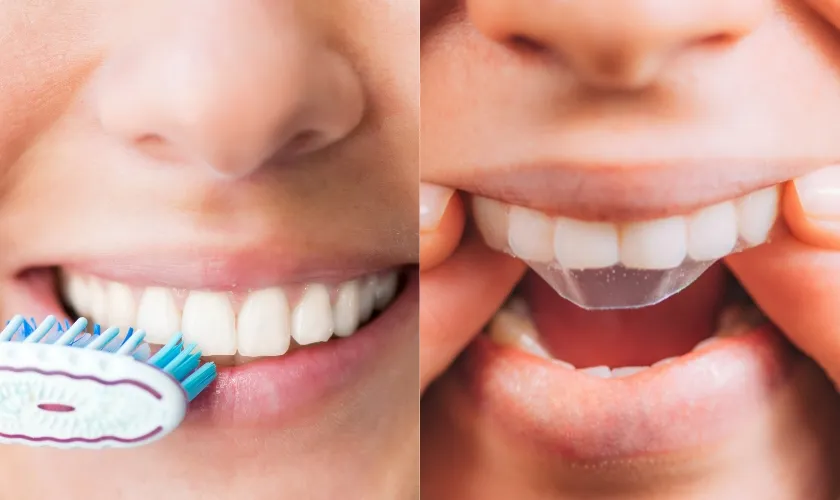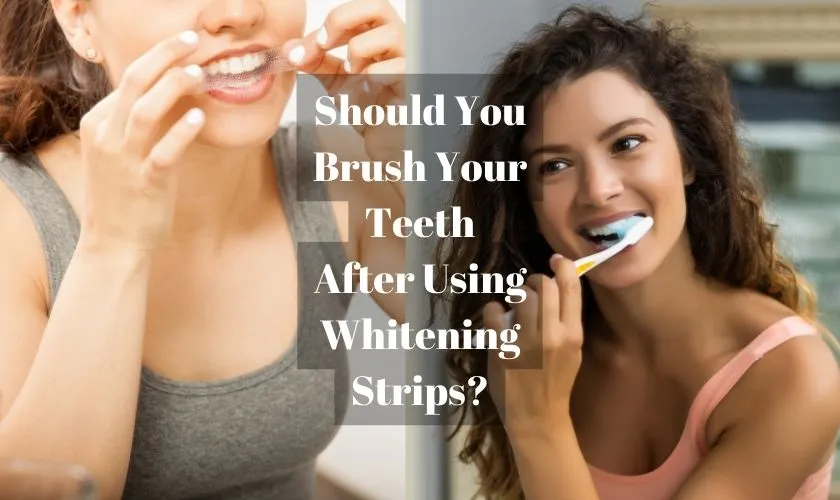Teeth Whitening Strips Common Mistakes
Teeth whitening strips offer a convenient way to brighten your smile, but they can be less effective or even harmful if not used correctly. Many people make common mistakes that hinder their results or cause unwanted side effects. Understanding these pitfalls is crucial for achieving a dazzling, healthy smile. This guide unveils the top 5 mistakes to avoid when using teeth whitening strips, helping you maximize effectiveness and minimize risks. Following these tips will help you navigate the world of teeth whitening, ensuring a brighter, more confident smile while maintaining optimal oral health. Proper usage is key to a successful and safe teeth whitening experience. Let’s dive into these common mistakes and learn how to avoid them.
Brushing Immediately After Strips
One of the most significant mistakes people make is brushing their teeth immediately after using whitening strips. This seemingly harmless habit can significantly reduce the effectiveness of the strips and potentially harm your enamel. The active ingredients in whitening strips, such as hydrogen peroxide, need time to work on your teeth without interference. Brushing right after can disrupt this process and lead to less noticeable results. Moreover, the abrasive action of brushing can remove the whitening agents before they have a chance to fully penetrate the enamel. This is why it’s crucial to understand the correct timing and the reasons behind waiting to brush your teeth after whitening strips.
Why You Should Wait to Brush

The primary reason to wait to brush after using whitening strips is to allow the active ingredients to work effectively. Hydrogen peroxide, the main whitening agent, needs sufficient time to break down stains and lighten the teeth. Brushing right after can wash away the product before it has fully done its job. In addition, your enamel is slightly softened during the whitening process. Brushing too soon can cause abrasion, increasing sensitivity and potentially damaging your enamel. Waiting ensures the whitening agents can penetrate the enamel and work their magic while protecting your teeth from unnecessary wear and tear. Patience is key for optimal results and maintaining healthy teeth.
The Timing of Brushing After Strips
So, how long should you wait before brushing your teeth after using whitening strips? The general recommendation is to wait at least 30 minutes to an hour. This allows the whitening agents to fully penetrate the enamel and do their job without interruption. During this time, avoid eating or drinking anything other than water, as food and beverages can also interfere with the whitening process. After the waiting period, you can brush your teeth gently to remove any remaining residue. Following this timing guideline is essential for maximizing the effectiveness of the whitening strips and protecting your oral health. Be sure to check the specific instructions on your whitening strips, as some brands may have slightly different recommendations.
Ignoring Product Instructions
Another common mistake is failing to read and follow the product instructions. Each brand of whitening strips has specific directions for use, including how long to apply the strips, how often to use them, and any precautions to take. Ignoring these instructions can lead to less effective results, increased sensitivity, or even potential damage to your teeth and gums. Manufacturers have designed these instructions to optimize safety and effectiveness. Reading the label ensures you use the product as intended, maximizing your chances of achieving a brighter smile without compromising your oral health. Taking a few minutes to understand the instructions can make a significant difference in your teeth whitening experience.
Not Following Application Guidelines

Proper application is critical for whitening strips to work effectively. This includes ensuring the strips are correctly placed on your teeth, avoiding contact with your gums, and following the recommended application time. Not following these guidelines can lead to uneven whitening, gum irritation, or diminished results. Make sure to align the strips carefully along your gumline and avoid overlapping them. Overlapping can lead to uneven whitening and increased sensitivity. Adhering to the recommended application time is also important; leaving the strips on for too long can increase the risk of side effects. Always refer to the product instructions for the specific application guidelines provided by the manufacturer.
Overuse of Whitening Strips
Using whitening strips more frequently than recommended is a common mistake that can lead to undesirable outcomes. Overuse can increase tooth sensitivity, irritate your gums, and potentially damage your enamel. Whitening strips contain active ingredients like hydrogen peroxide, which, while effective, can be harsh if overused. Following the recommended usage frequency is essential for achieving the desired results without compromising your oral health. Excessive use won’t necessarily make your teeth whiter faster; instead, it increases the risk of side effects and can even lead to a dulling effect on the teeth due to enamel damage. Stick to the recommended treatment schedule to ensure a safe and effective teeth whitening experience.
Understanding the Risk of Overuse
The primary risks of overuse include increased tooth sensitivity, gum irritation, and, in severe cases, enamel damage. Tooth sensitivity is a common side effect of teeth whitening, but it can worsen with overuse. Your gums can become inflamed and irritated if the whitening agents come into prolonged contact with them. Enamel damage, while less common, can occur if the overuse erodes the enamel, making your teeth more susceptible to cavities and other problems. Adhering to the recommended usage frequency is crucial to minimize these risks and protect your oral health. If you experience any sensitivity or discomfort, discontinue use and consult with your dentist.
Choosing the Wrong Strips

Not all whitening strips are created equal. Choosing the wrong strips can lead to disappointing results. Factors like the concentration of the whitening agent, the formulation of the strips, and the overall quality can vary significantly between brands. Selecting the right product for your needs is crucial for effective whitening and minimizing potential side effects. Consider your individual needs and preferences when selecting whitening strips. For example, if you have sensitive teeth, you might want to choose a strip with a lower concentration of hydrogen peroxide. Research different brands and read reviews to determine which strips are best for you. Consulting with your dentist can also help you select the most appropriate option for your specific dental health profile.
Selecting the Right Product for You
When selecting whitening strips, consider your oral health, the severity of your tooth discoloration, and your sensitivity level. If you have sensitive teeth or gums, opt for strips with a lower concentration of hydrogen peroxide. Look for products specifically designed for sensitive teeth. If you have significant tooth discoloration, you might need a strip with a higher concentration of the whitening agent, but be sure to use it as directed to avoid any potential issues. Reading reviews and comparing different brands can help you find a product that meets your needs and preferences. Always consult with your dentist before starting any teeth whitening treatment, especially if you have any underlying dental conditions or concerns.
Using Expired or Damaged Strips
Using expired or damaged whitening strips is another mistake that can compromise their effectiveness and potentially cause harm. Over time, the active ingredients in whitening strips can degrade, making them less potent. Using expired strips might not yield the desired results. Additionally, damaged strips can be less effective and may not adhere properly to your teeth, leading to uneven whitening or gum irritation. Always check the expiration date before using whitening strips and discard any that are past their expiration date. Inspect the strips for any signs of damage, such as tears or discoloration. Using expired or damaged products not only wastes your time and money but can also lead to less than optimal outcomes.
Checking the Expiration Date

Before using any whitening strips, always check the expiration date. The expiration date indicates when the product’s effectiveness is no longer guaranteed. The active ingredients in the strips gradually lose their potency over time, so using an expired product might not whiten your teeth effectively. Expired strips may also have a different chemical composition, which could increase the risk of sensitivity or irritation. Locate the expiration date on the packaging and ensure the strips are still within the recommended timeframe. If the strips are expired, it is best to discard them and purchase a fresh box for the best results. Checking the expiration date is a simple but crucial step to ensure both the effectiveness and safety of the product.
Protecting Your Teeth and Gums
Proper use of teeth whitening strips is not only about achieving a brighter smile but also about protecting your teeth and gums from potential harm. By avoiding the mistakes outlined in this guide, you can maximize the effectiveness of the strips while minimizing risks. Always follow the product instructions carefully, use the strips as directed, and be mindful of your oral health. If you experience any sensitivity or discomfort, discontinue use and consult with your dentist. Prioritizing your oral health ensures a safe and effective teeth whitening experience, leading to a beautiful, healthy smile that you can confidently show off. Remember that the best way to protect your teeth and gums is through consistent and informed oral care practices.
Tips for Healthy Teeth and Gums
Beyond avoiding the mistakes discussed, maintaining healthy teeth and gums involves a combination of good oral hygiene practices and regular dental checkups. Brush your teeth twice a day for two minutes each time with fluoride toothpaste. Floss daily to remove plaque and food particles from between your teeth and under your gumline. Use a fluoride mouthwash to further protect your teeth against decay. Eat a balanced diet and limit your intake of sugary snacks and beverages. Schedule regular dental checkups and cleanings to identify and address any dental issues early on. Taking these steps helps to maintain your oral health and keeps your teeth and gums in their best condition. A healthy mouth is essential for overall health, and these tips will help you achieve and maintain a bright, healthy smile.
